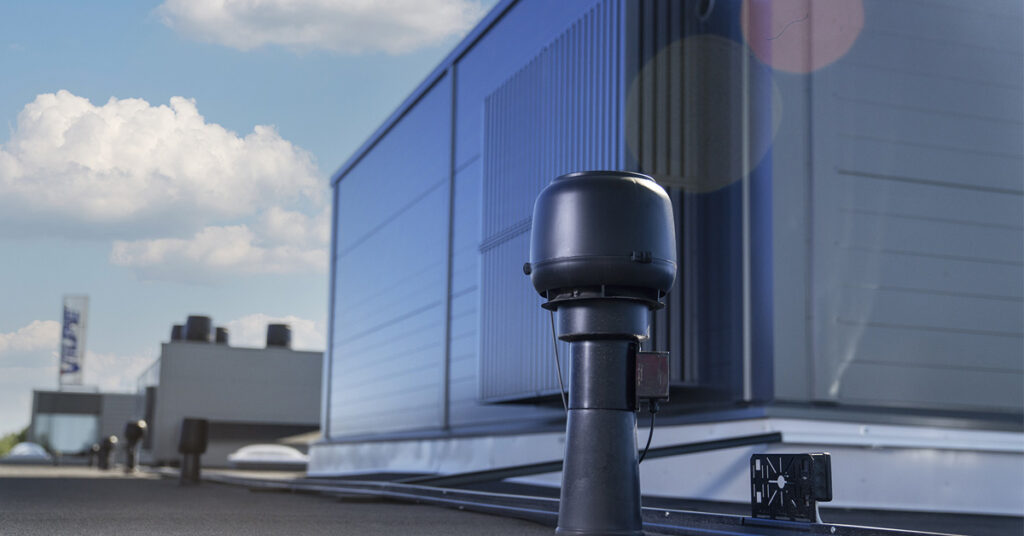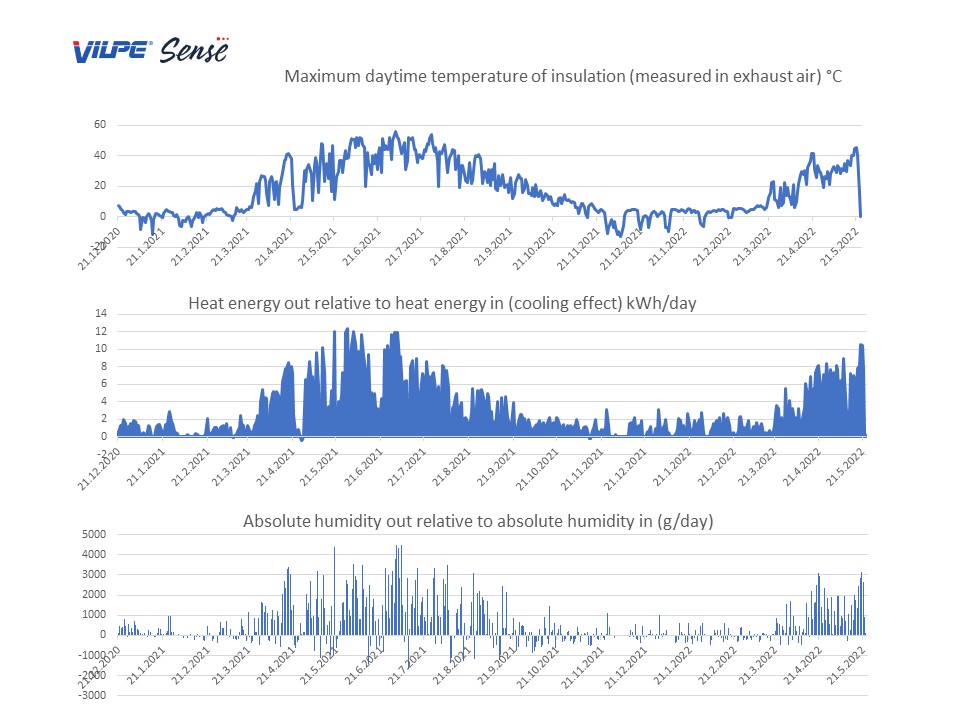A smart roof cools buildings in summer

Preventing moisture damage is not the only benefit of a smart roof: it also removes excess heat from structures, reducing the building’s energy consumption in summer and keeping the insulation in a better condition. A smart roof is a functioning solution also in winter. In cold weather, roof structure ventilation and thus heat removal are on a minimal level.
The smart roof ventilates the structures automatically and, if necessary, with the help of a roof fan: the fan draws air out of the structures, removing excess heat along with it. The smart roof’s algorithm is based on the fact that it reacts to rising moisture levels in the structures. In hot weather, the air in the structures can contain significantly more absolute humidity, and therefore the need for ventilation is often greater.
At the VILPE factory in Korsholm, we monitored the thermal energy leaving the structures over a roof area of about 200m2 for a year and a half. The data showed that during the warm summer months ventilation had to be increased, and at the same time, excess heat was efficiently removed from the structures.
Between May and August 2021, the total amount of excess thermal energy removed with ventilation was about 692 kWh, or an average of around 5.6 kWh/day.

The graph shows that during the winter months the ventilation demand is lower, which is why very little thermal energy is lost with the exhaust air. The smart roof’s algorithm is programmed to minimise ventilation in freezing weather. In sub-zero temperatures there is little moisture in the air, meaning that much less air leaves the structures. This means that the smart roof is also a sensible solution for Nordic winters.
Good for insulation

The removal of excess heat cools the structures. At the hottest times, the temperature of the air circulating in the insulation exceeded even 50°C. Without proper ventilation, the temperature would have been higher. For example, the thermal conductivity of mineral wool increases as the temperature rises, making it easier for heat to escape from the structure into the indoor air. Insulating structures work better when humidity and temperature levels can be kept optimal.
Another advantage is that the cooling needs of the building are reduced as VILPE Sense removes excess thermal energy from the structures in summer. This saves electricity which would otherwise be used to cool the premises, which is good for both the wallet and the environment.
Get to know what is a smart roof and how it prevents moisture damages.
